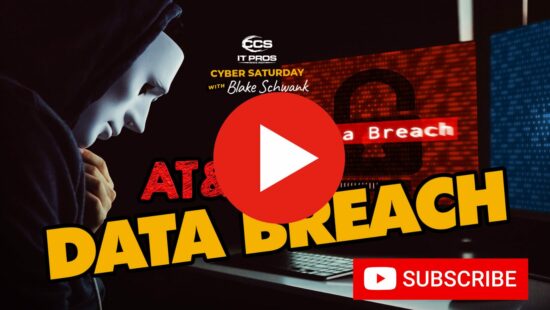Advance Auto Parts recently faced a significant data breach, exposing [...]
Secure Your Network Against Phishing Attacks Today
Phishing is arguably the most common and widespread form of cyberattack, thanks to its ease of execution and high success rate. The attack is so effective, in most instances, since the perpetrators usually bank on deceptive emails and websites to gather sensitive personal information maliciously. These criminals often ride on the fact that most employees can’t distinguish a well-crafted phishing email from a legitimate one. What’s more, by posing as trusted figures in the entity, they’re always as good as completing half the job.
But despite the attackers having the upper hand at winning unsuspecting users’ trust, there’s a way to seal all the loopholes and enhance your security posture. We’re talking about phish testing, an ingenious technique for determining your network’s vulnerability level and acting proactively to create security awareness.
So, what precisely is a phishing test, and how can your organization conduct a successful phishing test? Keep scrolling, and you’ll find out!

What is a Phishing Test?
A phishing test, aka phishing simulation, is a program that cybersecurity and IT professionals run to determine how an organization’s employees are susceptible to phishing attacks. In essence, security and IT experts in a safe, controlled environment usually send out realistic phishing messages to employees regularly to see if they’re prone to clicking on links or “phishes” they shouldn’t open.
The idea is to help employees become more cautious and aware of emails that seem too good to be true, improving their security behaviors. If an employee clicks on a phish in the course of the testing program, they’re automatically made aware of their actions and given the learning resources needed to help them detect signs of phishing attacks. The program also aims to encourage employees to report any suspicious activities as soon as their notice them to ward off potential attacks.
In collaboration with security professionals, organizations use phishing test reports to identify weak links and create custom training programs to bridge the gaps. That way, employees get to improve with time and be in better positions to point out [phishing attacks beforehand.
How to Run a Successful Phishing Test
Phish testing is an incredibly straightforward procedure that’s effortless to deploy and implement. Here are the top six tips for making it a successful program:
Set Up a Baseline
Establishing or setting up a baseline is the preliminary step to complete before launching a phish testing program. This is a reference point that will help you to determine how exposed your company is to phishing attacks and what percentage of your workers would have been caught up in the trap had it been an actual attack.
When setting up the baseline, you can either pre-inform the employees of your intention to run phishing tests or catch them by surprise. The decision is entirely up to your organization’s key decision-makers. But the latter usually paints out the most precise picture of your security posture, i.e., how vulnerable your employees are to phishing attacks.
Plan It Out
Phish testing is not a one-and-done campaign. Instead, it involves sending regular simulated phishing emails to employees for an extended period to determine the organization’s accurate preparedness level. So you must plan out how you’ll conduct the process throughout an agreed-upon period. Here, you should expose your employees to a security awareness training program, teaching them tactics for detecting phishing emails and how to handle the situation.
And like any other test, the best approach is to start small as you expand with time. Your initial phishing emails should be effortless to detect; you can attach red flags like misspellings, generic greetings, or poor grammar. But as you progress, the phishing messages should also become more sophisticated to reflect how real-world attacks would happen.
Time Your Phishing Tests Appropriately
In the spirit of togetherness, employees would be quick to alert their colleagues once one of them detects a phishing email. So unless you spread your phishing tests across different time slots, you might end up with compromised results that do not reflect on the company’s correct security preparedness level.
Throw Senior Executives in the Mix
Phish testing isn’t only a preserve for low-ranking employees but the entire workforce. In fact, if there’s a group more deserving of the test, it’s the senior executives, CEOs, COOs, and CFOs. Why’s that? Cybercriminals are aware that the senior executives are highly trusted by their subordinates, who won’t doubt the authenticity of phished emails when they arrive.
On top of that, the executives have easy access to valuable company information, thanks to their high status. Thus, a successful phishing attack would wreak great havoc on the company’s finances and reputation.
Use More Diversified Methods
Cybercriminals are getting more innovative and more sophisticated with their attacks by the day, and your phishing tests should also reflect the same. Generally, employees are often quick to point out external phishing attacks. However, the same cannot be said about internal email compromises, i.e., when a cybercriminal impersonates a respected figure like the HR manager, emailing employees about an alleged holiday allowance or bonuses.
When sending simulated phishing emails to employees, you should approach it from both angles to have an in-depth understanding of their awareness.
Analyze the Results and Data
After completing the phishing test and capturing the findings, it’s time to analyze them to determine whether the campaign was successful. The analysis is critical for identifying the most vulnerable employees, organizational trends, and training needs. Plus, your organization can use the report as a baseline for future phishing tests.
The report should comprise three categories:
- The number of employees who clicked the link
- Those who submitted sensitive information
- Those who reported the suspicious emails
You know you’re making substantial progress if the first two categories decrease while the last slot increases with time. Employees falling under the first two categories should receive further training and testing until they fully master the art of detecting malicious emails. In the same regard, employees who manage to detect and report phishing to the IT professionals should be applauded for their efforts.
How Colorado Computer Support Can Help
It is one thing to establish a phishing awareness program, but it’s an entirely different story to keep the fire burning. Maintaining a more cybersecurity-sensitive workforce involves exposing your employees through continuous security awareness training to keep up with hackers’ ever-evolving tactics.
Luckily for you, Colorado Computer Support, CCS offers phish testing, continuous awareness training, and more. We also monitor your IT systems 24/7 to proactively unmask and neutralize potential phishing attacks before they come to light. At CCS, our primary focus is on helping businesses improve productivity and efficiency by leveraging the right technology and providing customized IT support.
So don’t get left behind! Contact us now, and let us help you meet your goals while improving your security posture.
Latest Blog Posts

Discover why rural and critical access hospitals are not immune to [...]

Explore the recent AT&T data breach affecting call logs from Oct 2022 [...]



